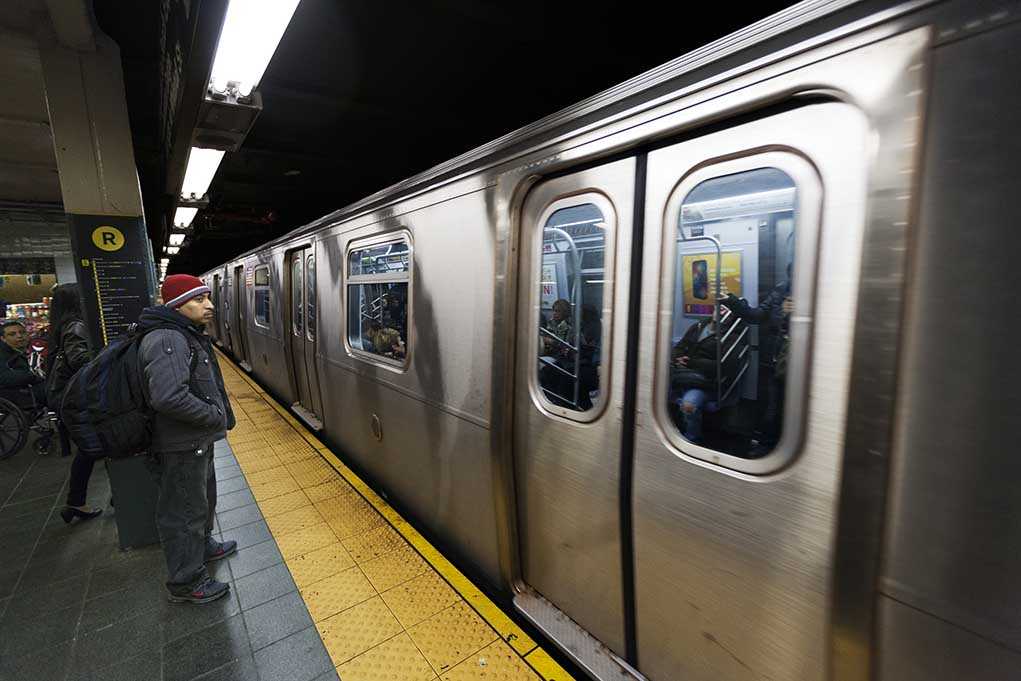
Six pint-sized criminals armed with knives carried out a brazen subway robbery, reigniting urgent questions about New York City’s public safety and the impact of past leftist policies.
Story Snapshot
- Six young perpetrators arrested after a violent knifepoint robbery at a NYC subway station.
- Incident exposes lingering safety issues in the subway system despite recent crime statistics.
- Rising concerns about violent crime challenge law enforcement and city leadership.
- Expert analysis points to policy failures and the need for robust security measures.
Violent Knifepoint Robbery by Youths Shocks NYC Subway Riders
On a busy evening in New York City, six juveniles were apprehended after a violent knifepoint robbery in a subway station. The suspects, described by police as “pint-sized,” targeted a commuter, using intimidation and weapons to steal personal belongings. Their arrest shines a spotlight on the persistent problem of violent crime in the city’s subway system, raising fears among law-abiding riders who depend on public transit every day for work and family obligations.
Despite claims of improving safety, this incident underscores the vulnerability that everyday Americans face, particularly in urban environments shaped by years of progressive governance. For many, the subway has become a symbol of how leftist policies have allowed lawlessness to flourish, putting innocent lives at risk. The sheer audacity of minors carrying out such attacks points to deeper failures in crime prevention, juvenile justice, and community oversight.
Background: Crime and Safety Challenges in New York City Transit
Crime in the NYC subway system has fluctuated for decades, but recent years have seen troubling increases in violent assaults, even as some major felonies reportedly decline. The COVID-19 pandemic altered ridership patterns, leading to a resurgence in criminal activity as crowds returned. With millions of commuters and tourists relying on the subway daily, maintaining safety remains a complex challenge. Past incidents of subway robberies and assaults have eroded public trust and contributed to anxiety among families and seniors, who remember safer times.
Law enforcement agencies, especially the NYPD, have struggled to keep pace with shifting crime trends. The Metropolitan Transportation Authority (MTA) oversees transit operations, while city government sets funding and policy priorities. However, critics argue that bureaucratic hurdles and misplaced spending on non-essential programs have distracted from core public safety needs. The partnership between police and transit authorities is critical, but leadership must focus on practical solutions rather than political posturing.
Recent Developments: Crime Statistics and Public Sentiment
Official reports indicate some progress, with July 2025 marked as the safest July on record for the NYC subway, featuring an 8% drop in major felonies compared to the previous year. Yet, felony assaults continue to rise, and incidents like the knifepoint robbery remind citizens that statistics do not always reflect lived reality. Law enforcement has increased patrols and installed more security cameras, but many riders remain skeptical about their effectiveness. Public frustration grows as families worry about the safety of their children and elderly relatives in a system once considered a hallmark of American ingenuity.
Many experts urge a comprehensive approach, combining strong enforcement with community engagement to address root causes of youth crime. Academics and practitioners alike warn against relying solely on surface-level fixes, noting that changes in crime reporting and legal definitions can obscure real threats. The ongoing debate highlights a disconnect between official narratives and the daily experiences of New Yorkers, especially those who value personal responsibility and constitutional rights.
Impact and Conservative Perspectives: What Needs to Change
The consequences of unchecked crime extend beyond immediate victims, affecting local businesses, tourism, and the city’s reputation nationwide. For conservatives, the erosion of public safety is a direct result of progressive policies that prioritize political correctness over law and order. The knifepoint robbery by minors is seen as a symptom of deeper systemic problems—fiscal mismanagement, weakened family values, and an unwillingness to hold offenders accountable. Policymakers must restore common-sense approaches, empower law enforcement, and defend the constitutional rights of citizens to live free from fear.
6 pint-sized perps busted in violent knifepoint robbery at NYC subway station: cops, sources https://t.co/CLUGed25v6
— ConservativeLibrarian (@ConserLibrarian) October 7, 2025
As calls grow for stronger measures, the focus must remain on protecting families, restoring traditional principles, and rejecting agendas that undermine American values. Only then can New York City—and the nation—return to the safety and prosperity that millions expect and deserve.
Sources:
The State of Crime in New York City at Midyear 2025
MTA Announces Last Month Was Safest July in NYC Subway History
FTA Senior Advisor Marc Molinaro: Crime in Subway Is Real











